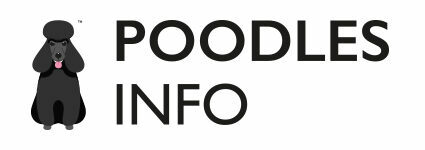Poodle Grooming: how to get it right
Grooming your Poodle not only ensures they look their best but also promotes optimal health and well-being. By understanding this unique breed’s characteristics and mastering the essential grooming techniques, you’ll contribute to your Poodle’s happiness and longevity. This essay will guide you through the fascinating world of Poodle grooming, providing valuable information on everything you need to know to keep your Poodle looking and feeling their best.
Poodle Characteristics
One of the most distinguishing features of the Poodle breed is its unique coat, which is dense, curly, and often described as having a “cloud-like” or “cotton-puff” appearance. These coats come in a variety of colors, such as white, black, apricot, and silver, and can also be multi-colored. It is important to familiarize oneself with the Poodle’s coat type, as this directly impacts the type of grooming required to maintain a healthy and aesthetically pleasing appearance.
Poodles come in three primary sizes: Standard, Miniature, and Toy. Each of these sizes has its specific grooming needs. The Standard Poodle is the largest of the three, standing at 15 inches or taller at the shoulder, and typically has a thicker, more robust coat. As such, it may require more extensive grooming sessions to keep its fur looking pristine. Miniature Poodles, standing between 10 and 15 inches, and Toy Poodles, measuring 10 inches or less, have slightly less dense coats but still require regular grooming for optimal health and appearance.
The Poodle’s coat is made up of two primary hair types: the topcoat and the undercoat. The topcoat is dense and curly, which often poses a challenge during grooming sessions. This dense, curly coat is prone to tangles and matting, which can lead to discomfort and even skin infections if not addressed properly. The undercoat is lighter and softer, working to insulate the Poodle from harsh temperatures. Both coats require regular attention, but the topcoat is especially important for maintaining a proper Poodle appearance.
When grooming Poodles, there are several factors to consider, such as the frequency of grooming, style or cut of the hair, and tools used. Poodles require regular grooming – typically every 4 to 6 weeks, depending on the size of the dog and its coat’s condition. Many Poodle owners enlist the help of professional groomers to ensure that their Poodle is properly groomed and has a well-maintained appearance. Grooming styles can include classic cuts such as the “continental clip” or “puppy clip,” though owners can also opt for a more personalized style. Using the appropriate grooming tools, such as electric clippers, scissors, combs, and brushes, is crucial for achieving the desired Poodle look while also maintaining the health of the coat and skin.
Proper Poodle grooming involves attention to various aspects of their physical appearance, such as trimming their nails, cleaning their ears, and brushing their teeth. Nails should be trimmed every couple of weeks to keep them at a comfortable length for the Poodle. Ears should be checked regularly for any signs of infection and cleaned as needed, as Poodles are prone to ear infections due to the dense hair that often grows inside their ears. Lastly, maintaining good dental hygiene is vital for overall health, and Poodles should have their teeth brushed at least two to three times a week using a dog-specific toothpaste.
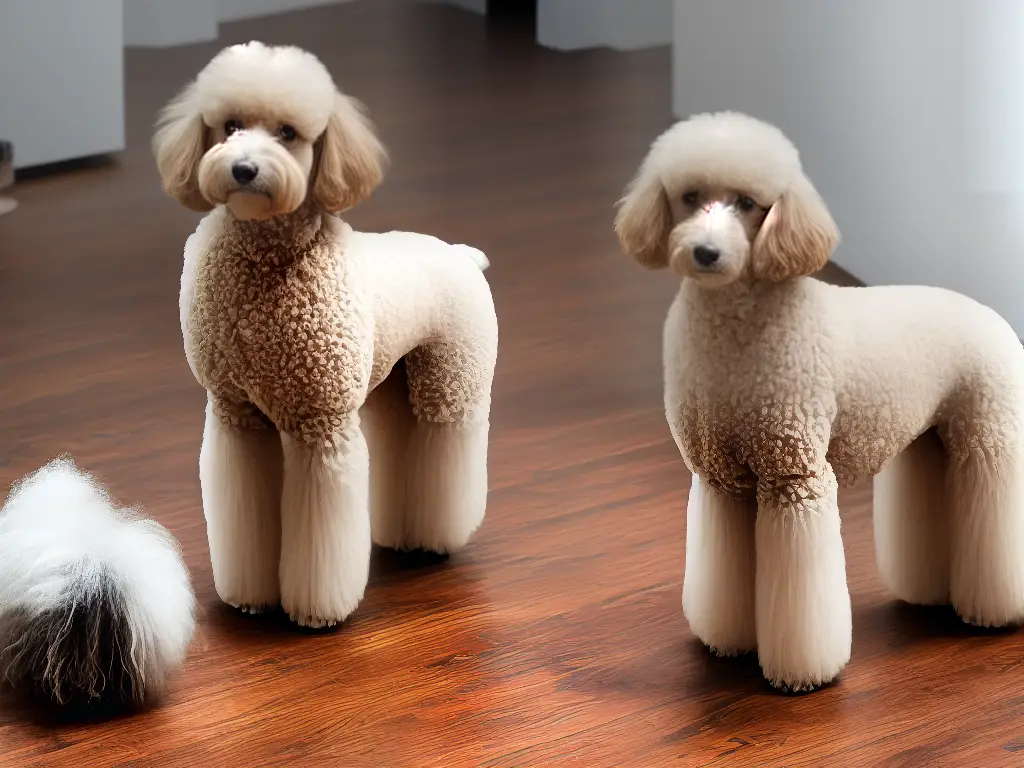
Basic Grooming Tools and Equipment
In addition to the mentioned grooming practices, having the right tools for grooming a poodle is essential. One of the most crucial tools is a good quality brush. Poodles have thick, curly hair that is prone to matting, so brushing them regularly is extremely important. There are various types of brushes available for different purposes, such as slicker brushes and pin brushes. Slicker brushes have fine, short bristles that help remove loose hair and tangles, while pin brushes have longer, thicker bristles that make it easier to get through the poodle’s dense coat. Utilizing the appropriate brush along with maintaining other grooming aspects contributes to a well-groomed and healthy Poodle.
Combs are another essential tool in poodle grooming. They come in various sizes and designs to cater to the needs of different types of poodle coats. For example, wide-toothed combs are suitable for removing larger tangles and knots, while fine-toothed combs are more effective for removing smaller tangles and loose hair. It’s essential to use a comb designed specifically for pet grooming because human hair combs may not be suitable for the poodle’s curly coat.
Clippers and scissors are vital tools for trimming and shaping the poodle’s coat. High-quality clippers will have different blades and attachment combs to help achieve the desired length and style. User-friendly and safe clippers will make the grooming process easier for both the owner and the poodle. Scissors, especially curved scissors, are important for shaping the poodle’s coat around the face, feet, and tail, giving the poodle a neat and finished appearance. Ensure that your scissors are sharp for precise cutting and rounded at the tip to avoid injury.
Shampoos and conditioners are essential for maintaining the health and cleanliness of the poodle’s coat and skin. As poodles have sensitive skin, it’s important to choose products specially formulated for dogs. These products should be free from harsh chemicals and added fragrances, as these may cause irritation. Conditioner will also help to keep the poodle’s coat soft, manageable, and less prone to matting.
Drying equipment plays a significant role in poodle grooming because their dense coats take longer to dry. Proper drying prevents tangles, matting, and odor-causing bacteria from forming on their skin. Towels can be used to remove excess water from their coat, but using a pet-specific hairdryer is more efficient in drying their hair evenly and quickly. These hairdryers often come with attachments such as brushes and nozzles to help create a smooth, sleek finish. Some hair dryers have adjustable temperature settings, allowing you to choose the most comfortable temperature for your poodle during the drying process.
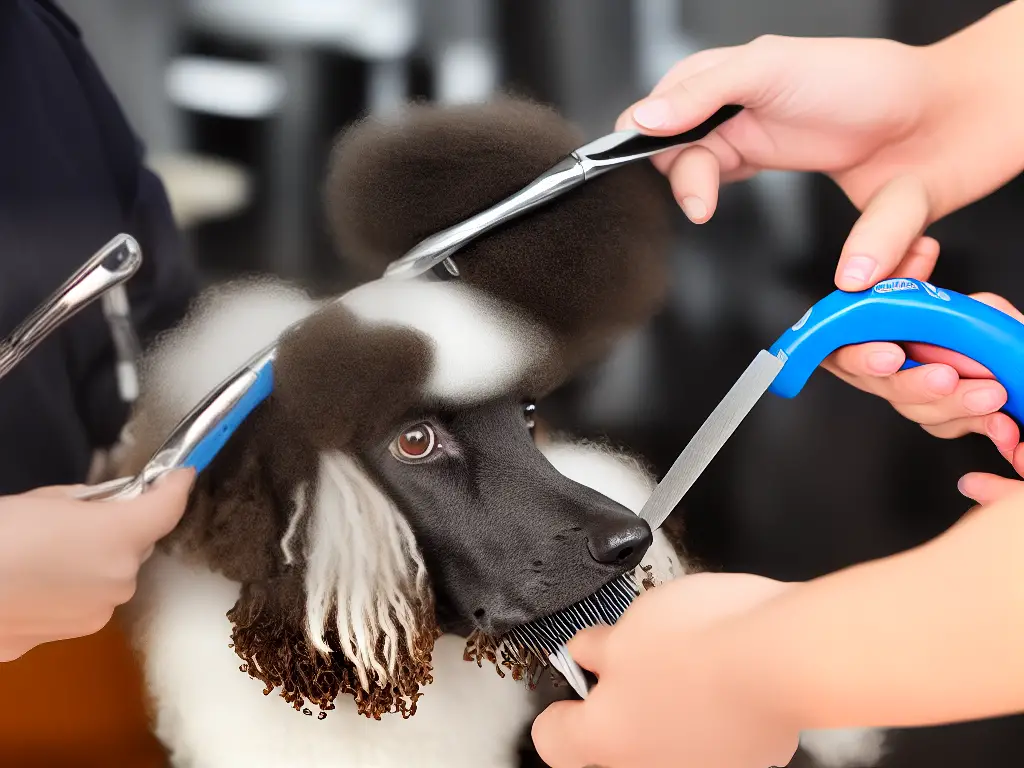
Brushing and Combing Techniques
Following the drying process, regular brushing and combing become crucial in maintaining a poodle’s coat. Poodles are known to have curly, dense fur that requires consistent grooming to avoid tangles and mats. These tangles not only cause discomfort for the dog but can also lead to skin issues. By learning the proper techniques of brushing and combing, you can help maintain a healthy and beautiful coat for your poodle. Use the brushes and nozzles that come with the pet-specific hairdryer to ensure a smooth and tangle-free finish, keeping your poodle’s coat looking its best and promoting overall well-being.
Before beginning the brushing process, gather the necessary tools, such as a slicker brush, a metal comb, and a detangling spray. Always ensure that your poodle is comfortable and secure in a well-lit, quiet area to make the grooming process easier for both of you. Start by lightly misting the poodle’s fur with the detangling spray to help in removing any tangles from the coat. This will also prevent hair breakage.
When brushing a poodle’s coat, it is essential to brush in layers. Begin at the lowest layer of the coat by parting the hair and holding the top layers out of the way. Using a slicker brush, gently brush out any tangles in small sections, working your way up from the root to the tip of the hair. The slicker brush has thin, closely spaced wires, making it easier to remove tangles, even in tight curls. Make sure to brush in the direction of hair growth to avoid causing any discomfort to your pet.
After brushing out all layers of the coat, use a metal comb to ensure that all remaining tangles have been removed. Combing not only helps to further remove tangles but is also an essential step in any grooming routine to maintain a healthy, smooth coat. Begin at the tip of the hair and work your way towards the root without applying too much pressure. Be cautious around delicate areas, such as behind the ears and under the legs, where matting is more likely to occur.
In addition to maintaining a healthy coat, consistent brushing and combing provide the opportunity to monitor the condition of your poodle’s skin. This proactive approach allows you to quickly identify and address any potential issues, such as skin irritation, flea infestations, or infections. Establishing a regular grooming routine to brush and comb your poodle can significantly contribute to the overall wellness and happiness of your pet.
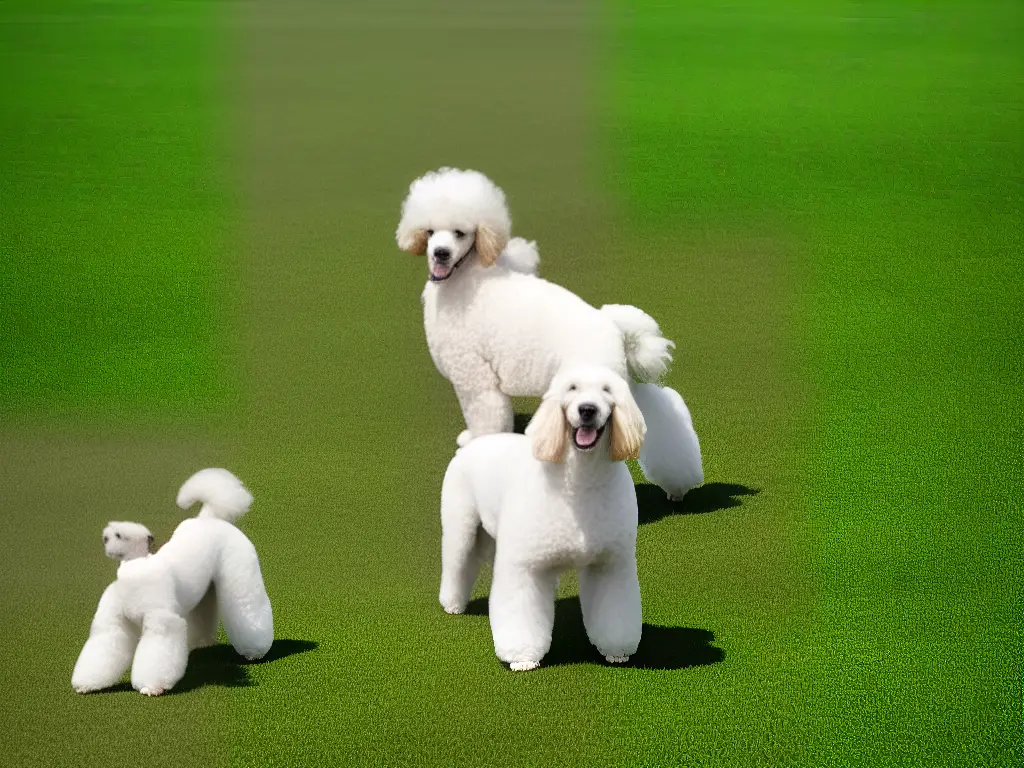
Bathing and Drying
Along with brushing and combing, grooming a poodle involves several other essential steps. Bathing and drying are crucial parts of the process to maintain their health and distinctive look. By incorporating all these grooming techniques into your routine, you’ll ensure your poodle remains clean, happy, and looking their best.
When preparing a bath for your Poodle, make sure to use a gentle, high-quality dog shampoo that is both non-irritating and beneficial for their skin and coat.
To clean their ears, it is essential to use a moist cotton ball or a pet ear cleaning solution. This helps to remove any dirt and bacteria that might have accumulated inside the ears while preventing ear infections.
When it comes to clipping their nails, ensure the use of pet-safe nail clippers by gently trimming off the tips of each nail. Be careful not to cut the quick, the pink part that contains blood vessels and nerves, as this can cause your Poodle pain and bleeding. If you are not comfortable with this task, consider taking your Poodle to a professional groomer or veterinarian to have their nails trimmed.
Protecting your Poodle’s eyes during the bathing process is crucial as well. Avoid using shampoos containing harsh chemicals that may cause eye irritation. You can also apply a pet-safe eye lubricant or tear stain remover before bathing to help protect your Poodle’s eyes from any possible irritations. Gently washing the face using a soft, damp cloth or sponge helps to clean the delicate areas around their eyes and nose without causing discomfort.
To achieve the best drying results, use a high-quality microfiber towel or chamois cloth to gently remove most of the water from your Poodle’s coat while minimizing tangles and hair damage. Then, it is a good idea to utilize a pet-safe hair dryer on a low heat setting to dry the coat completely, brushing through with a slicker brush periodically. Drying and brushing simultaneously can prevent matting and allow you to remove any loose hairs comfortably.
Regularly bathing, drying, and grooming your Poodle are vital for maintaining their overall health, appearance, and comfort. Taking the necessary precautions during the process and paying attention to essential details such as protecting their eyes, cleaning their ears, and clipping their nails will guarantee a comprehensive grooming experience for your Poodle. In addition, these regular grooming sessions not only help you bond with your pet but also allow you to monitor their health, enabling you to take swift action in case of any irregularities or concerns.
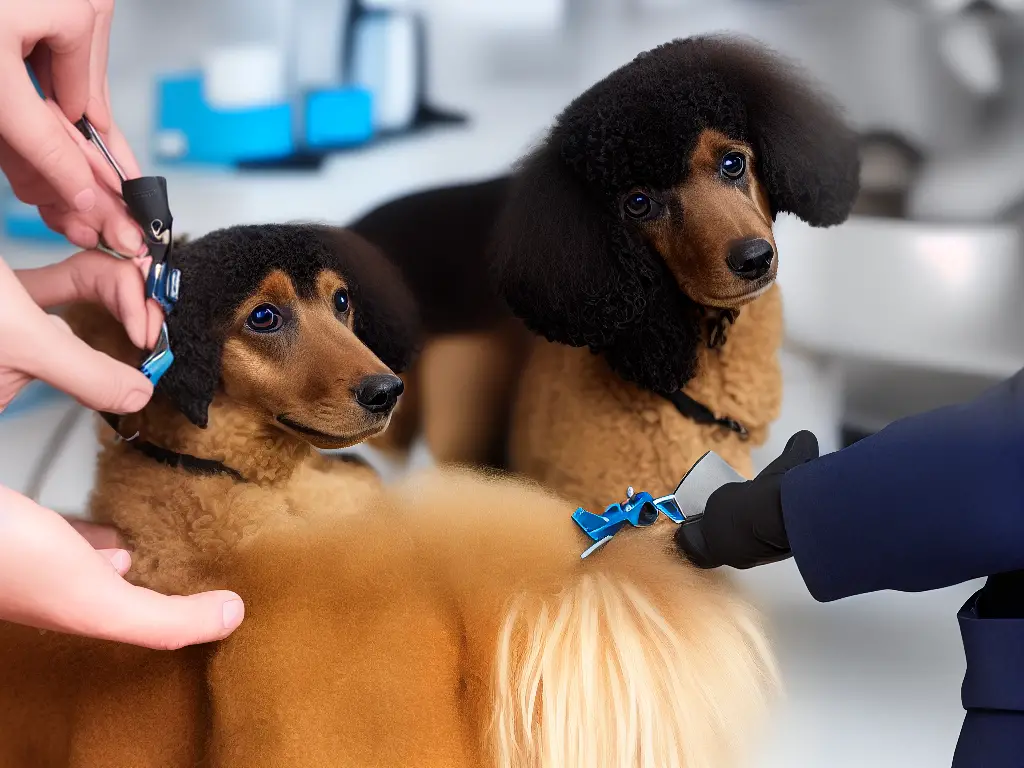
Clipping and Scissoring Techniques
In order to groom a Poodle effectively, it is essential to learn about the different clipping and scissoring techniques that keep them looking their best. One fundamental technique is using electric clippers for trimming the coat. Clippers come with various blade sizes, and selecting the appropriate blade size depends on how short or long you want the coat to be – a #10 blade will provide a shorter coat, while a #4 blade will leave a longer coat. Always remember to clip in the direction of hair growth to achieve a smooth, even finish. By combining the right tools and techniques, your Poodle will stay clean, comfortable, and healthy.
Scissoring is another vital technique in poodle grooming. This skill requires confidence and precision, as any mistakes will be noticeable. Curved and straight scissors are commonly used in scissoring. Curved scissors are particularly useful for shaping the topknot, ears, and legs since they allow for a smooth curve. Straight scissors are perfect for trimming and tidying up the coat after clipping. Scissoring is typically done on areas that require more detailed work or blending, such as the face and paws. To achieve the desired shape, point the scissors away from the dog’s body and make small, precise cuts.
Thinning shears are another valuable tool in poodle grooming. These shears are designed to remove bulk from the coat while blending different lengths for a more natural appearance. Thinning shears work well around the face, ears, and certain parts of the body that may look too bulky after clipping or scissoring. They are also beneficial in reducing the risk of matting as they allow better airflow to the skin beneath the coat.
Managing hair growth in different parts of a poodle’s body can be challenging, especially since various areas require specific attention. For instance, poodles have hair that grows continuously within the ear canal, making them prone to ear infections if not groomed properly. Regular plucking and trimming of ear hair is crucial to maintaining good ear health. Moreover, the hair around the eyes and mouth should also be routinely trimmed to avoid unwanted hair irritation or obstruction.
As a highly intelligent, elegant, and adaptable breed, poodles require regular grooming to maintain their overall health and well-being. Proper poodle grooming not only enhances their appearance but also ensures their comfort and happiness. Establishing a regular grooming routine, ideally every four to six weeks, will help keep your poodle’s coat in optimal condition, as well as allowing you to try out different styles suited to their needs.
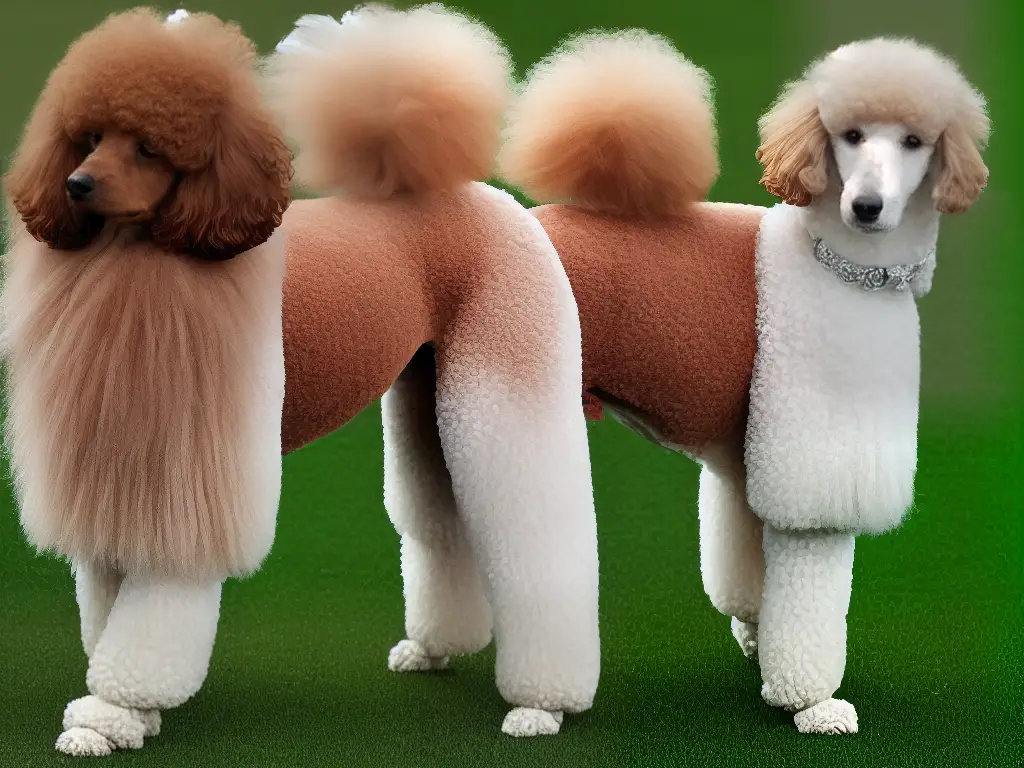
Poodle Grooming Styles
There are several popular poodle grooming styles to consider, including the Puppy Cut, Continental Clip, English Saddle Clip, and Sporting Clip. Each of these styles serves a specific purpose and can significantly enhance your poodle’s appearance while also accommodating their lifestyle needs. By familiarizing yourself with various clipping and scissoring techniques and incorporating them into your grooming routine, you’ll ensure that your poodle always looks their best and feels comfortable in their coat.
The Puppy Cut: also known as the Teddy Bear Cut, is an excellent choice for poodles that are primarily indoor pets or for those who enjoy an active lifestyle with their owners. This low-maintenance grooming style is characterized by an even trim across the entire body, typically 1-2 inches, creating a cute, teddy bear-like appearance. The Puppy Cut promotes cleanliness and reduces the risk of matting, making it an ideal option for pet owners who prefer a more manageable grooming routine.
The Continental Clip: is one of the most iconic poodle grooming styles, often seen in dog shows and other formal events. This style involves shaving the poodle’s face, throat, feet, and base of the tail, while keeping the rest of the body’s coat full and fluffy. The hindquarters are shaved, leaving ‘pom-poms’ around the ankles and a large, fluffy tail. Although this fancy style may seem unnecessary, it was originally designed to keep the poodle’s joints and vital organs warm while allowing them to move quickly in water. The Continental Clip requires regular maintenance, including trimming, brushing, and bathing, to keep the poodle looking its best.
The English Saddle Clip: is another traditional poodle grooming style that is similar to the Continental Clip but less extreme. While the poodle’s face, throat, feet, and base of the tail are also shaved, the hindquarters are only partially shaved, creating a more modest appearance. This clip involves leaving ‘bracelets’ around the poodle’s hocks and a puff on the tail. As a less elaborate variation of the Continental Clip, the English Saddle Clip is a popular choice among poodle owners who are looking for a moderately formal appearance that is easier to maintain.
The Sporting Clip: is a more functional and practical grooming choice for poodles that enjoy an active, outdoor lifestyle. This style consists of a short coat length, around 0.5-1 inch across the entire body, with a slightly longer trim around the legs and tail. This minimizes the accumulation of dirt and debris while providing better mobility and comfort for the poodle. The Sporting Clip is a low-maintenance grooming style that is ideal for owners who prioritize their pet’s comfort and practical needs.
In conclusion, selecting a poodle grooming style greatly depends on the dog’s lifestyle and the owner’s preferences. It is essential to consider the amount of time and effort required to maintain a specific style and how it may affect the poodle’s overall health and comfort. Poodle owners can consult with a professional groomer to determine the most suitable grooming style for their pet, ensuring an attractive and functional result that contributes to the poodle’s well-being.
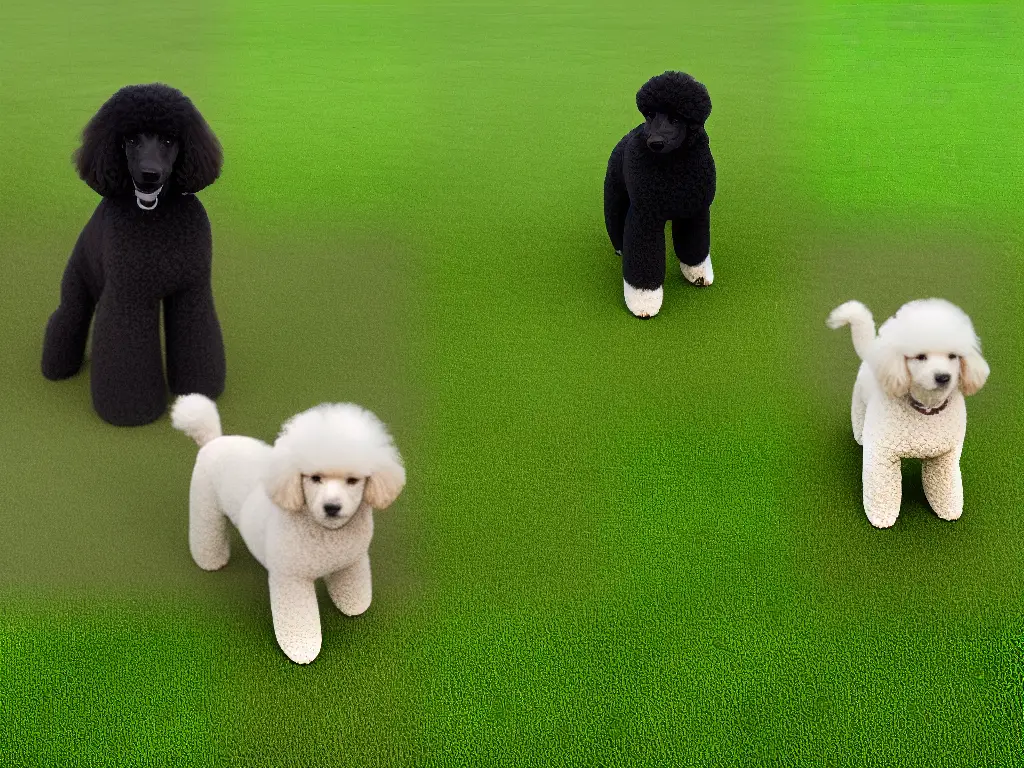
Maintaining Grooming Equipment
Maintaining a consistent and thorough grooming regimen is crucial to ensure the health and well-being of the poodle. One critical aspect of grooming is properly maintaining the grooming equipment. High-quality tools play a vital role in successful grooming sessions, making it essential to keep them clean, sharp, and well-lubricated. By properly caring for your tools, you can maximize efficiency and minimize risks like skin issues, infections, and injuries, further contributing to your pet’s overall well-being.
Cleaning grooming tools like clippers, brushes, scissors, and combs is essential to keep them in optimal condition. Regular cleaning removes dirt, hair, debris and oils from pet skin that can transfer onto the equipment. For clippers and blades, it is recommended to use a blade wash or cleaning solution to clean away excess hair and grime. Scissors, combs, and brushes should be washed with warm soapy water and cleared of any hair build-up. After cleaning these tools, ensure they are completely dry before storing them, as dampness may lead to rust or bacterial growth.
Sharpening grooming tools like scissors and clipper blades not only keeps them in proper working order but also allows for a smoother and safer grooming experience. Sharp blades reduce the risk of pulling hair, which minimizes stress and discomfort for the dog. Depending on how often you groom your poodle, you may need to sharpen blades and scissors every three to six months. Professionals or those who frequently groom should invest in a blade sharpener, while those who only groom occasionally can send their shears out for professional sharpening.
Lubricating your grooming equipment will help prolong their lifespan and maintain their effectiveness in each grooming session. Clippers should be lubricated by applying clipper oil to the blades before and after each use. This oil will prevent overheating, keep them running smoothly, and minimize corrosion. The pivot area of scissors should be lubricated every few weeks or according to the manufacturer’s instructions. When using oil, apply a small amount directly to the pivot area, open and close the scissors a few times to evenly distribute the oil, and then wipe away any excess.
Proper maintenance of your poodle grooming equipment is essential for a safe and enjoyable grooming experience with your canine companion. Regularly inspect your tools, such as scissor screws, clipper cords, and blades, for any signs of wear and tear or the need for replacement. Store your equipment in a clean, dry, and cool environment to prevent rust and corrosion.
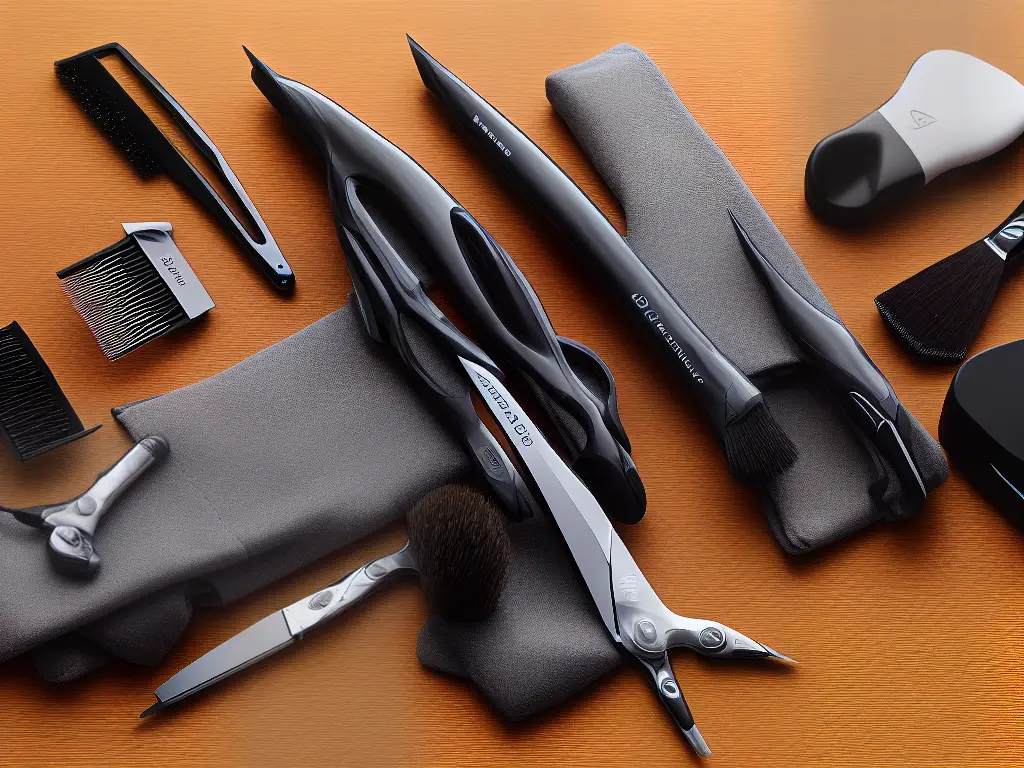
Basic Poodle Health Care
Aside from grooming equipment care, maintaining proper dental care is also crucial for your poodle’s wellbeing. Regular brushing of your poodle’s teeth helps prevent plaque buildup, gum disease, and bad breath. Brush your pet’s teeth at least twice a week using a dog-specific toothbrush and a safe toothpaste. Incorporate dental chews and toys designed to clean teeth into your poodle’s routine for optimal dental health.
Nail care is another important part of poodle grooming. Poodles have nails that grow continuously, and if they are not trimmed regularly, they can become overgrown, causing discomfort or even pain. Ideally, you should trim your poodle’s nails every three to four weeks using dog nail clippers or a Dremel tool designed for pet nails. Keep in mind that poodle nails have a blood vessel called the “quick” inside, which can cause pain and bleeding if accidentally cut. In case you cut into the quick, have a styptic powder or pencil handy to stop the bleeding quickly.
In addition to dental care and nail care, staying vigilant to common health issues that may require additional attention during grooming is crucial. Some common concerns specific to poodles include ear infections, skin conditions, and hair matting. Regularly checking your poodle’s ears for redness, swelling, or any abnormal odor can help you spot ear infections early on. Addressing skin conditions like allergies or hot spots requires monitoring them during grooming and seeking veterinary guidance for proper treatment. Moreover, brushing your poodle’s coat daily is essential in preventing the formation of painful mats.
Poodle owners should also be aware of potential eye issues that can arise, such as tear stains or more severe conditions like cataracts and progressive retinal atrophy (PRA). During the grooming process, keep an eye out for any excessive tearing or discharge, which may be signs of an underlying health issue. Gently wiping around the eyes with a soft, damp cloth can help prevent tear stains on your poodle’s face. If you notice any cloudiness in the eyes, changes in vision, or other concerning symptoms, consult with your veterinarian for a thorough evaluation and appropriate treatment options.
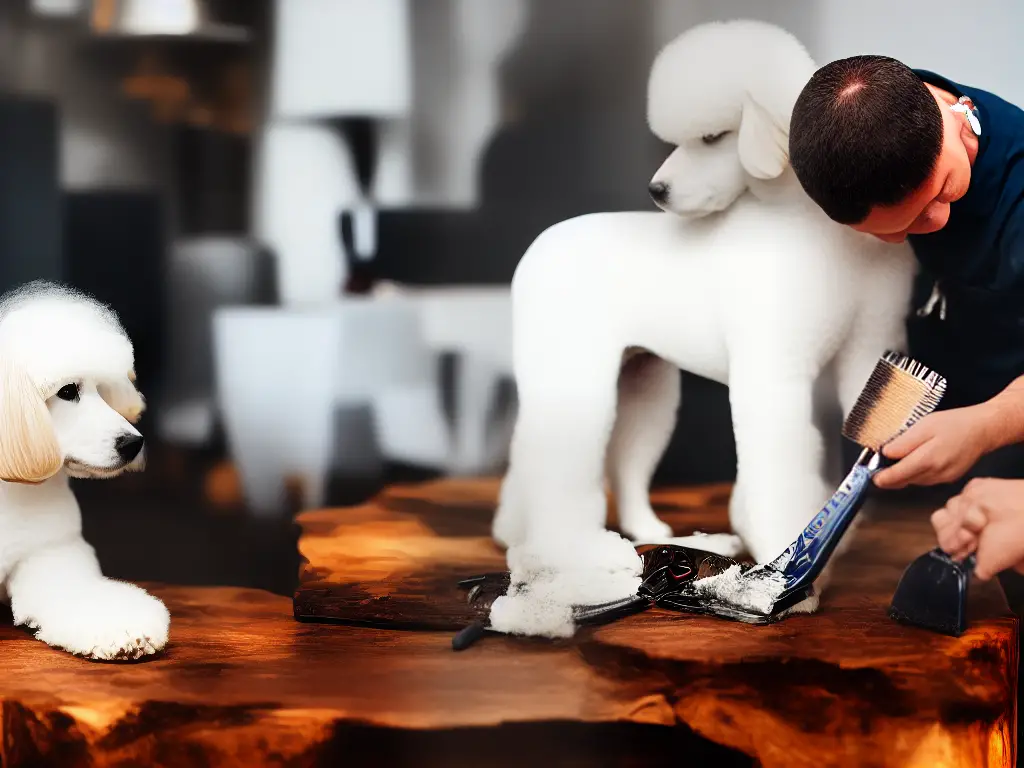
Having acquired a solid understanding of the tools, techniques, and proper care for Poodle grooming, you’re well-equipped to maintain your Poodle’s appearance and health. Remember that success lies in persistence, patience, and practice. By regularly grooming your Poodle, not only will you bond with them, but you’ll build the skills and knowledge needed to create a beautiful and healthy pet. Embrace your new grooming expertise, and may your Poodle’s coat shine as bright as your bond.
